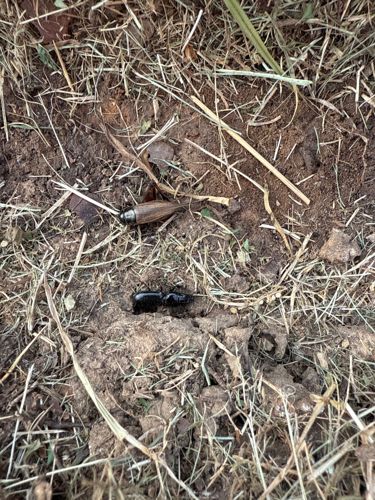Dung Beetle
Scientific Name: Various species, often within genera like Onthophagus, Geotrupes, Scarabaeus, Phanaeus
Order & Family: Order: Coleoptera, Family: Scarabaeidae (subfamilies Scarabaeinae and Aphodiinae are common dung beetles)
Size: Typically 0.2 to 2 inches (5 mm to 5 cm) in length, though some tropical species can be larger.

Natural Habitat
Dung beetles are found in a variety of habitats worldwide, including grasslands, forests, deserts, and agricultural areas, as long as there is a sufficient supply of animal dung. They require loose soil for digging tunnels or burying dung balls.
Diet & Feeding
Dung beetles feed on dung (feces) of herbivores and omnivores. They are divided into three main groups based on their feeding and nesting strategies: rollers (who roll dung balls), tunnelers (who bury dung directly where it's found), and dwellers (who live within the dung pat).
Behavior Patterns
Dung beetles are known for their distinctive behavior of rolling dung into balls for feeding or breeding. The male typically rolls the ball, and the female may ride on it. They can roll balls much larger and heavier than themselves. They are active primarily at night or in the early morning hours to avoid the heat. Some species bury dung directly into tunnels under the pat.
Risks & Benefits
Benefits: Dung beetles provide significant ecological benefits. They are natural decomposers, playing a crucial role in nutrient cycling, soil aeration, and water penetration. By burying dung, they reduce pasture fouling, control fly populations that breed in feces, and help in seed dispersal. Risks: There are no significant risks posed by dung beetles to humans or agriculture. They are considered beneficial insects.
Identified on: 8/11/2025